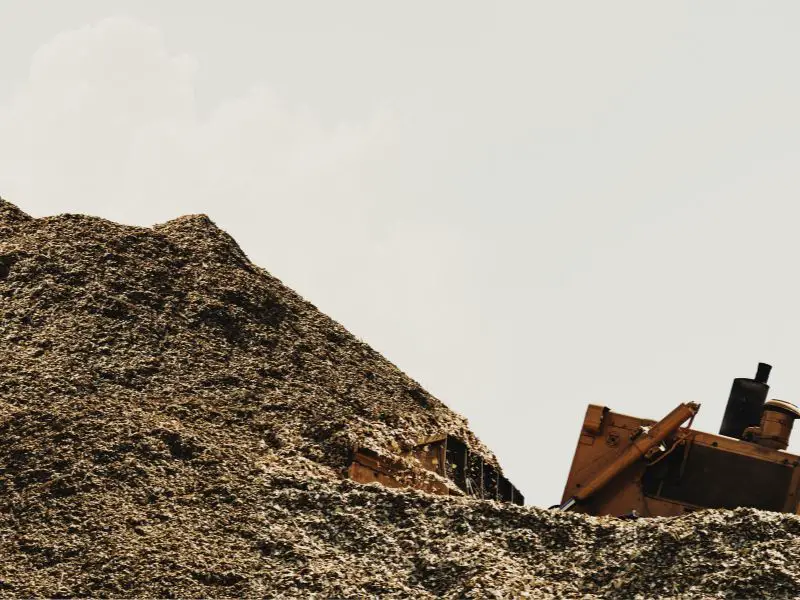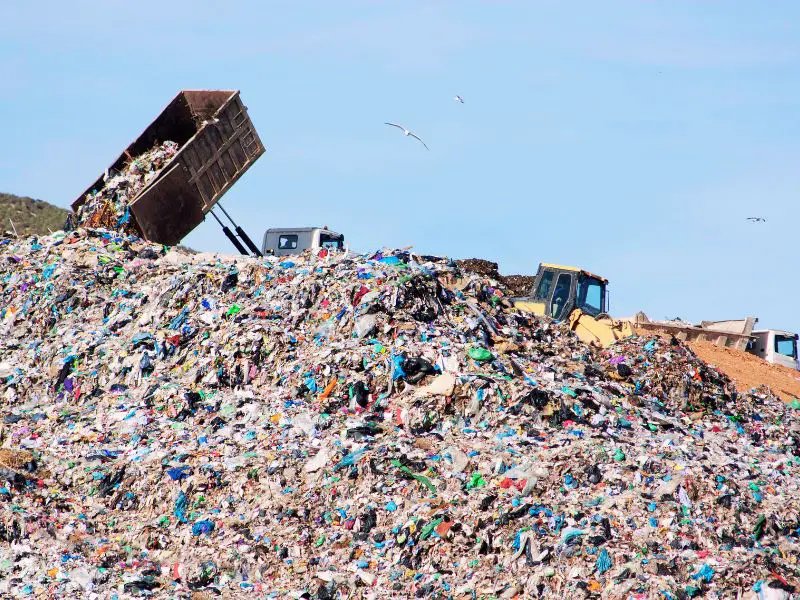Are you as curious as I am about the not-so-hidden world of waste management? If you’ve ever wondered where all our garbage goes after it’s picked up from our front yards, then stick with me. Today, we’re taking a trip to an intriguing place: Bantar Gebang Landfill. Now, you might be thinking “A landfill… really?” But trust me on this one – it’s more fascinating than what meets the eye.
As we peel back the cover of daily life and reveal its underbelly in Indonesia, we’ll discover how things ‘magically’ disappear from our sight but never truly vanish. So buckle up for this ride and let’s visit the amazing Bantar Gebang Landfill together.
The Fascinating Tale of Bantar Gebang: More Than Just a Landfill
Every day, about 7,000 tons of garbage are dumped at Bantar Gebang Landfill – that’s almost an astonishing total of two million tons per year! Hence its significance can’t be understated as it effectively handles nearly all municipal solid waste produced by Jakarta and surrounding areas.

Despite being often viewed negatively due to the associated environmental implications such as methane emission and groundwater contamination; some positives arise from landfills like Bantar Gebang.
- The generation of employment opportunities for local communities,
- Recovery of valuable materials through recycling
- And even generating electricity through landfill gas capture techniques.
This might sound a bit hilarious but without Bantar Gebang Landfill playing its part efficiently and diligently in waste management; Jakarta would probably have been buried under its refuse!
But let us not forget about the challenges too. The mammoth task performed by Bantar Gebang Landfill isn’t devoid of problems – overflowing trash heaps that occasionally catch fire and risk to public health due to inadequate sanitation facilities are few among many concerns.
In response to these issues though, a comprehensive waste management system has been put into place including regular inspections, waste segregation practices, & improved safety protocols.
In essence, Bantar Gebang Landfill personifies how our society grapples with waste management – taking on both challenges & possibilities head-on!
Intricacies of Waste Management at Bantar Gebang
One major issue associated with the Bantar Gebang landfill is the emission of methane gas. As organic matter decomposes under the anaerobic conditions prevalent in landfills, it produces this potent greenhouse gas which contributes significantly to global warming. According to research by the United Nations Framework Convention on Climate Change (UNFCCC), landfills account for about 11% of all anthropogenic methane emissions worldwide.

Pollution and Health Risks:
Pollution caused by leachate – a liquid that has percolated through solid waste – is another critical concern related to the Bantar Gebang landfill. Leachate seeps into soil and groundwater sources leading to contamination risks not only for local fauna but also for humans residing nearby.
- Groundwater Contamination: Heavy metals present in electronic wastes can contaminate groundwater making it unfit for consumption or agricultural use.
- Air Quality Degradation: Burning wastes emit toxic fumes worsening air quality which poses severe health risks including respiratory diseases among locals.
Efforts towards sustainable management at Bantar Gebang Landfill include installing a system that captures some portion of these harmful gases converting them into energy or flaring them off safely minimizing their impact on climate change.
While necessary for managing urban waste, large-scale operations like Bantar Gebang Landfill pose serious environmental challenges requiring urgent attention and sustainable solutions.
The Socio-Economic Impact of Bantar Gebang Landfill on Local Communities
In a paradoxical twist, Bantar Gebang landfill is not just a dumpsite but also home to thousands of people. These folks have formed their unique communities amidst mountains of trash.
Approximately 6000 families now call this place home, subsisting on meager income from recycling activities. Despite the harsh living conditions and health hazards associated with such an environment, they’ve managed to build lives here.

The inhabitants of Bantar Gebang landfill are mostly scavengers who spend their days sorting through piles of trash for recyclable materials. The earnings from selling these items act as their main source of livelihood.
This job may seem grim to outsiders but it’s just another day in paradise for them – there’s even a bit of humor tied with it like finding weird or valuable objects among the rubble every once in a while! Their spirit and resilience against adversity make up for what they lack materially.
There’s more than meets the eye when talking about life at Bantar Gebang landfill. Besides work, community members engage themselves in various social activities which include sports events and religious gatherings. In fact, within this vast expanse lies schools that provide the education needs of children residing here; surprising isn’t it? A testament to human adaptability and fortitude under dire circumstances.
Life is what you make out of it”-and nowhere does this adage stand truer than at Bantar Gebang landfill. Despite its outward appearance as merely a wasteland filled with refuse, residents have managed to carve out a semblance of normalcy, proving that even in the most unlikely places, community and resilience can flourish.
Bantar Gebang’s Environmental Challenges and Mitigation Strategies
The Bantar Gebang landfill covers an area of approximately 110 hectares and receives about 7,000 tons of trash every day from Jakarta alone. Despite its overwhelming size and capacity, it struggles with a multitude of environmental challenges. One major issue at the Bantar Gebang landfill involves air pollution.
Methane gas produced by decomposing waste can lead to serious health problems for residents and workers. Furthermore, spontaneous fires within the garbage heap emit toxic fumes into the atmosphere.
To combat this problem, an innovative technology called ‘landfill gas extraction’ is being implemented. This process collects methane emissions for conversion into electricity. However, “fixing” Bantar Gebang isn’t just about controlling gases.
Another significant challenge lies beneath leachate contamination – a liquid that percolates through solid waste and carries potentially harmful substances into groundwater sources.
In response, bioswales have been developed to filter out contaminants before they reach water bodies naturally. A bioswale, essentially a landscape element designed to remove silt and pollution from surface runoff water, “serves” a dual purpose: safeguarding local ecosystems while also reducing dependence on artificial treatment facilities. In all seriousness though (and without wishing to sound like a broken record), these strategies are mere band-aids on bullet wounds if we don’t address our global addiction to consumption.
Frequently Asked Questions (FAQs)
Explore these captivating environmental tips that highlight the significance of our planet:

